Metal Fabrication Technology for Agriculture
Metal Fabrication Technology for Agriculture, 2nd Edition provides students with an easy-to-understand, safety-conscious introduction to agricultural welding processes and techniques. Each section of this full-color book begins by introducing students to equipment and materials used in agricultural welding and includes complete setup instructions. The subsequent chapters in each section allow students to learn individual welding techniques in various applications and positions. Metal Fabrication Technology for Agriculture, 2nd Edition provides extensive coverage of brazing and specialized nonmetallic fabrication, designed to lead students step-by-step in developing the skills necessary for welding all types of agricultural machinery. Each chapter includes close up shots of actual welds and learning aids that have been proven to be effective, making this how-to and reference manual a key resource for students participating in agriculture education programs throughout the country
Product details
Title Page 2
Copyright 4
Contents 5
Preface 10
Features of the Text 12
Acknowledgments 14
About the Author 15
Index of Experiments and Practices 17
Chapter 1 Introduction to Agriculture Welding and Fabrication 22
Introduction 22
Welding Defined 23
Uses of Welding 24
Welding Processes 25
Occupational Opportunities in Welding 29
Training for Welding Occupations 30
Student Organizations 31
Experiments and Practices 31
Metric Units 32
Chapter 2 Safety in Welding and Fabrication 36
Introduction 36
Burns 37
Eye and Ear Protection 39
Respiratory Protection 42
Ventilation 45
Material Specification Data Sheets (MSDS) 45
Waste Material Disposal 45
Ladder Safety 46
Electrical Safety 47
Electrical Safety Systems 47
Voltage Warnings 49
Extension Cords 49
Safety Rules for Portable Electric Tools 51
General Work Clothing 51
Special Protective Clothing 52
Handling and Storing Cylinders 53
Fire Protection 55
Equipment Maintenance 57
Work Area 58
Hand Tools 58
Hand Tool Safety 59
Hammer Safety 59
Power Tools 60
Metal Cutting Machines 62
Safe Use of Circular Saws 63
Material Handling 65
Chapter 3 Oxyfuel Welding and Cutting Equipment, Setup, and Operation 70
Introduction 70
Pressure Regulators 71
Design and Service of Welding and Cutting Torches 76
Welding and Heating Tips 77
Reverse Flow and Flashback Valves 79
Hoses and Fittings 81
Backfires and Flashbacks 82
Uses of the Oxyacetylene Flame 83
Characteristics of the Fuel-gas Flame 83
Fuel Gases 84
Acetylene (C2H2) 84
Liquefied Fuel Gases 87
Propane and Natural Gas 89
Leak Detection 89
Types of Flames 94
Filler Metals 95
Mild Steel 97
Chapter 4 Oxyacetylene Welding 100
Introduction 100
Mild Steel Welds 101
Outside Corner Joint 109
Butt Joint 109
Lap Joint 111
Tee Joint 113
Out-of-position Welding 114
Vertical Welds 114
Butt Joint 116
Lap Joint 117
Tee Joint 117
Horizontal Welds 118
Horizontal Stringer Bead 118
Butt Joint 119
Lap Joint 119
Tee Joint 119
Overhead Welds 119
Stringer Bead 120
Mild Steel Pipe and Tubing 121
Horizontal Rolled Position 1G 121
Horizontal Fixed Position 5G 124
Vertical Fixed Position 2G 125
45° Fixed Position 6G 126
Thin-wall Tubing 127
Chapter 5 Soldering and Brazing 130
Introduction 130
Advantages of Soldering and Brazing 131
Fluxes 133
Filler Metals 136
Joint Design 141
Building Up Surfaces and Filling Holes 148
Silver Brazing 151
Soldering 153
Chapter 6 Oxyacetylene Cutting 160
Introduction 160
Metals Cut by the Oxyfuel Process 161
Eye Protection for Flame Cutting 161
Cutting Torches 162
Cutting Tips 163
Oxyfuel Cutting, Setup, and Operation 166
Hand Cutting 169
Layout 173
Selecting the Correct Tip and Setting the Pressure 174
The Chemistry of a Cut 175
The Physics of a Cut 176
Plate Cutting 179
Cutting Table 179
Torch Guides 179
Distortion 181
Cutting Applications 183
Pipe Cutting 185
Chapter 7 Plasma Arc Cutting 190
Introduction 190
Plasma 191
Plasma Torch 192
Cables and Hoses 194
Power Requirements 194
Heat Input 195
Distortion 196
Applications 196
Starting Methods 198
Kerf 199
Gases 200
Machine Cutting 201
Safety 202
Manual Cutting 203
Straight Cuts 203
Beveling of a Plate 205
Cutting Holes 206
Gouging 207
Cutting Round Stock 208
Chapter 8 Shielded Metal Arc Equipment, Setup, and Operation 212
Introduction 212
Welding Current 213
Types of Welding Power 215
Open Circuit Voltage 216
Operating Voltage 216
Arc Blow 216
Types of Power Sources 217
Generators and Alternators 221
Rectifiers 222
Duty Cycle 223
Welding Cables 224
Electrode Holders 225
Work Clamps 226
Setup 226
Chapter 9 Shielded Metal Arc Welding of Plate 230
Introduction 230
Effect of Too High or Too Low Current Settings 233
Electrode Size and Heat 234
Arc Length 235
Electrode Angle 236
Electrode Manipulation 239
Positioning of the Welder and the Plate 240
Practice Welds 241
Stringer Beads 242
Square Butt Joint 244
Edge Weld 248
Outside Corner Joint 253
Lap Joint 257
Tee Joint 260
Chapter 10 Shielded Metal Arc Welding of Pipe 266
Introduction 266
Pipe and Tubing 268
Preparation and Assembly 269
Practice Welds 271
1G Horizontal Rolled Position 275
2G Vertical Fixed Position 279
5G Horizontal Fixed Position 281
Pipe Tee Joints 282
Laying Out a Saddle Pipe Tee Joint 284
Chapter 11 Gas Metal Arc Welding Equipment, Setup, and Operation 290
Introduction 290
Metal Transfer 291
Filler Metal Specifications 295
Wire Melting and Deposition Rates 295
Welding Power Supplies 296
Molten Weld Pool Control 298
Equipment 302
Spot Welding 306
Chapter 12 Gas Metal Arc Welding 312
Introduction 312
Setup 313
Gas Density and Flow Rates 319
Amperage and Arc Voltage Characteristics 319
Electrode Extension 321
Welding Gun Angle 323
Effect of Shielding Gas on Welding 324
Practices 325
Metal Preparation 325
Flat Position, 1G and 1F Positions 326
Vertical Up 3G and 3F Positions 329
Vertical Down 3G and 3F Positions 332
Horizontal 2G and 2F Positions 333
Overhead 4G and 4F Positions 334
Pulsed Arc Metal Transfer, 1G Position 337
Axial Spray 340
Chapter 13 Flux Cored Arc Welding Equipment, Setup, and Operation 344
Introduction 344
Principles of Operation 346
Equipment 347
Advantages 347
Limitations 349
Electrodes 349
Flux 350
Shielding Gas 354
Welding Techniques 355
Troubleshooting FCA Welding 360
Chapter 14 Flux Cored Arc Welding 364
Introduction 364
Practices 365
Flat-position Welds 369
Square-groove Welds 370
V-Groove and Bevel-groove Welds 370
Fillet Welds 374
Vertical Welds 377
Horizontal Welds 379
Overhead-position Welds 382
Thin-gauge Sheet Metal Welding 385
Chapter 15 Filler Metal Selection 390
Introduction 390
Manufacturers’ Electrode Information 391
Understanding the Electrode Data 391
Data Resulting from Mechanical Tests 391
Data Resulting from Chemical Analysis 391
SMAW Operating Information 392
Core Wire 392
Functions of the Flux Covering 393
Filler Metal Selection 394
AWS Filler Metal Classifications 395
Carbon Steel 397
Stainless Steel Electrodes 402
Aluminum and Aluminum Alloys 405
Chapter 16 Weldability of Metals 410
Introduction 410
Steel Classification and Identification 411
Carbon and Alloy Steels 413
Stainless Steels 414
Cast Iron 416
Preweld and Postweld Heating of Cast Iron 417
Practice Welding Cast Iron 418
Welding without Preheating or Postheating 419
Aluminum Weldability 421
Repair Welding 422
Hardfacing 424
Chapter 17 Welding Joint Design, Welding Symbols, and Fabrication 430
Introduction 430
Weld Joint Design 431
Mechanical Drawings 435
Welding Symbols 444
Indicating Types of Welds 444
Weld Location 444
Location Significance of Arrow 446
Fillet Welds 446
Groove Welds 447
Backing 448
Fabrication 448
Layout 453
Material Shapes 461
Assembly 462
Assembly Tools 463
Fitting 465
Tack Welding 465
Welding 466
Finishing 467
Chapter 18 Plastic and Other Nonmetallic Fabrication Techniques 480
Introduction 480
Types of Plastics 481
Acrylonitrile/Butadiene/Styrene (ABS) 482
Polyethylene (PE) 482
Polyvinyl Chloride (PVC) and Chlorinated Polyvinyl Chloride (CPVC) 482
Polypropylene (PP) 482
Polybutylene (PB) 483
Plastic Identification 483
The Welding of Plastic 485
Heat Welding 486
High-speed Welding 487
Filler Material 487
Hot-gas Plastic Welding 488
Setup, Shutdown, and Servicing 488
Airless Plastic Welding 490
Welding Temperatures 490
Plastic Welding 491
Hot-gas and Airless Welding Techniques 491
Double V-Groove Welds 495
Tack Welding 496
Pipe Welding 497
Solvent Welding 501
Appendices 506
I Student Welding Report 507
II Conversion of Decimal Inches to Millimeters and of Fractional Inches to Decimal Inches and Millimeters 508
III Conversion Factors: U.S. Customary (Standard) Units and Metric Units (S.I.) 509
IV Abbreviations and Symbols 511
V Metric Conversion Approximations 512
VI Pressure Conversion 512
VII Welding Associations and Organizations 513
VIII Careers 514
Bilingual Glossary 516
Index 555
Safety in Welding and Fabrication
Oxyfuel Welding and Cutting Equipment, Setup, and Operation
Oxyacetylene Welding
Soldering and Brazing
Oxyacetylene Cutting
Plasma Arc Cutting
Shielded Metal Arc Equipment, Setup, and Operation
Shielded Metal Arc Welding of Plate
Shielded Metal Arc Welding of Pipe
Gas Metal Arc Welding Equipment, Setup, and Operation
Gas Metal Arc Welding
Flux Cored Arc Welding Equipment, Setup, and Operation
Flux Cored Arc Welding
Filler Metal Selection
Weldability of Metals
Welding Joint Design, Welding Symbols, and Fabrication
Plastic and Other Nonmetallic Fabrication Techniques
None
Shipping and Returns
Shipping cost is based on weight. Just add products to your cart and use the Shipping Calculator to see the shipping price.
We want you to be 100% satisfied with your purchase. Items can be returned or exchanged within 30 days of delivery.
There are no question found.

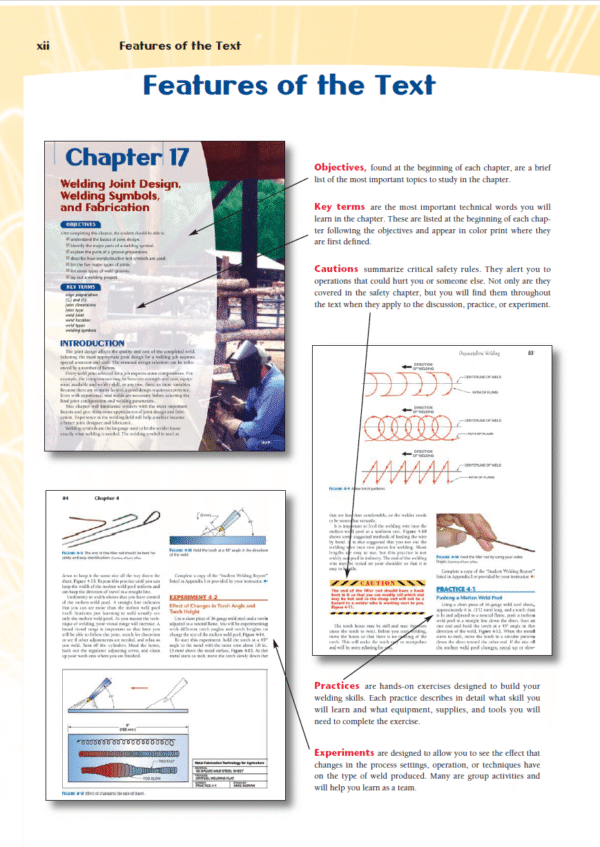
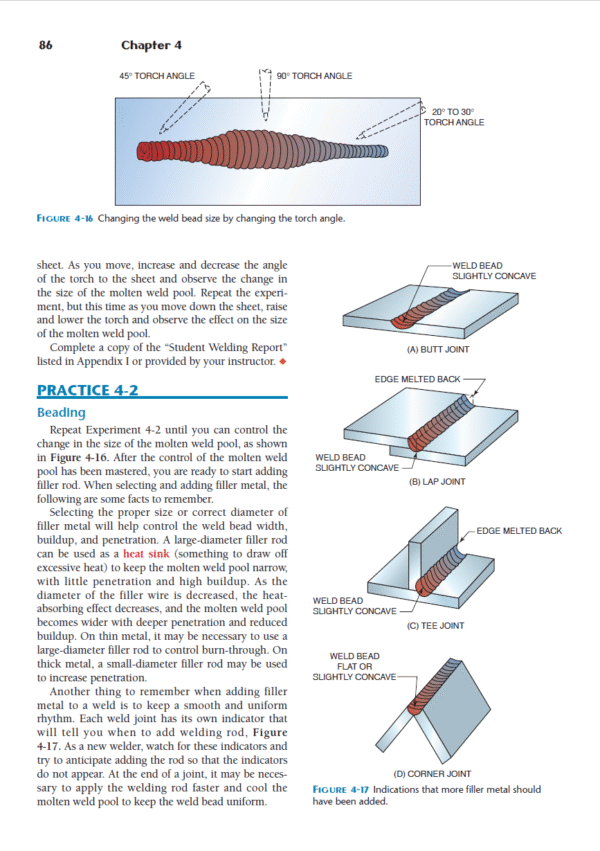
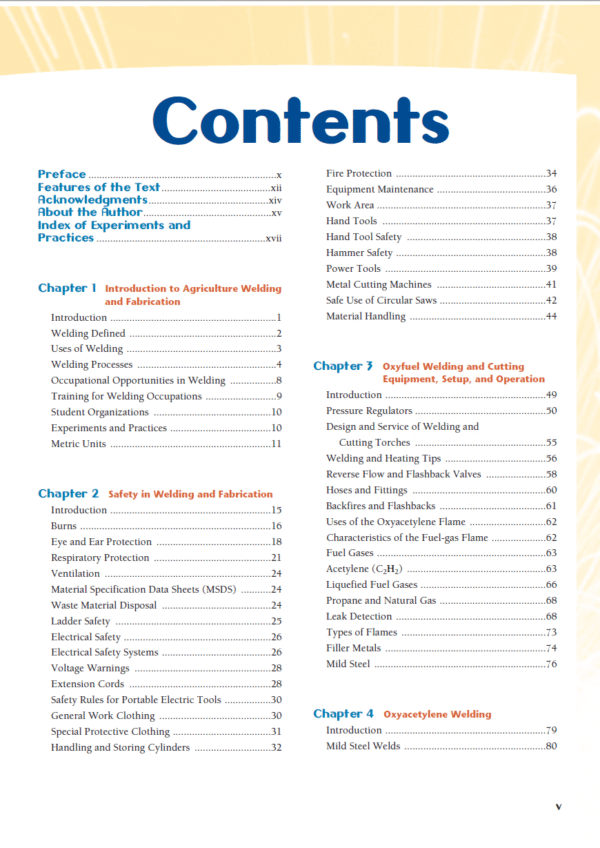




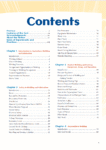
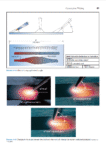

Rating & Review
There are no reviews yet.